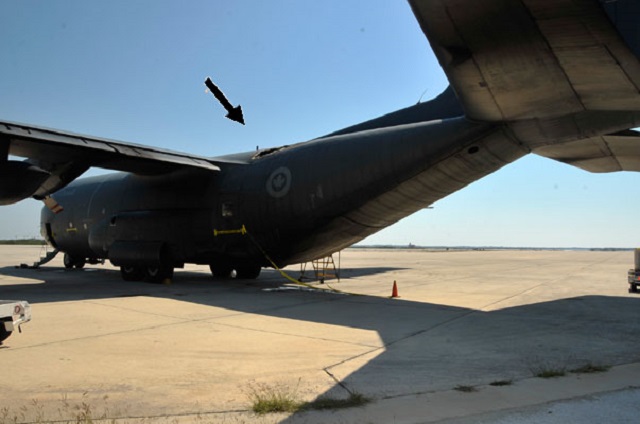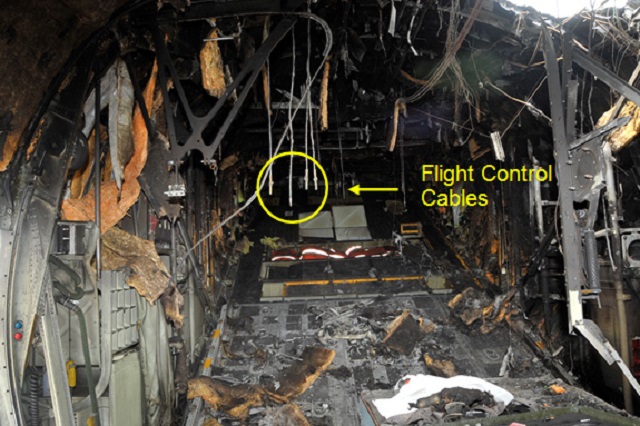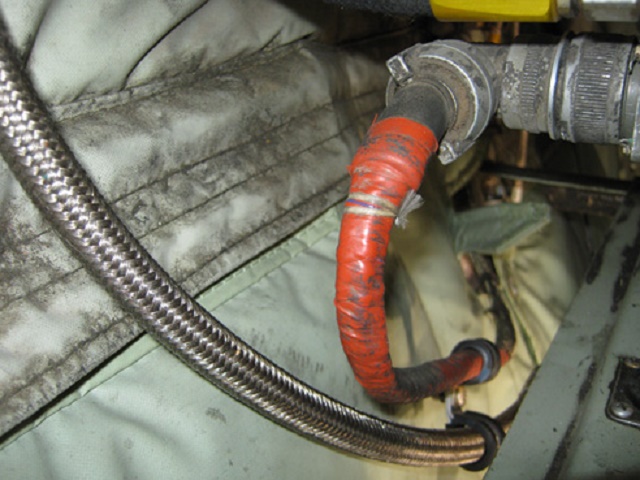Excessive chafing and arcing between an axillary hydraulic line and the power cable is what caused a fire that destroyed a Royal Canadian Air Force C-130H at Naval Air Station Key West in Florida in 2012.
A newly released flight safety report says the aircraft, configured for aerial refuelling, was midway through a touch-touch-and-go exercise when a “jet-like flame” shot across the cargo ramp floor.
That flame erupted into a fireball as the aircraft’s loadmaster was reaching for a fire extinguisher to put it out. The Hercules had just become airborne (10ft) when the flight crew was altered and the pilot immediately brought the aircraft back down on the 10,000ft (3km) runway.
The crew escaped with just one minor injury and fire crews responded within three minutes, but the rear of the aircraft was so badly damaged that it was deemed too expensive to repair.

Damaged C130H, registration CC130342
The incident occurred on 21 February 2012, while the aircraft was in Florida supporting a CF-18 deployment. The flight safety report was completed in December and made public on 8 April.
According to the report, the stainless steel outer braid of a hydraulic flex hose had chafed and made contact with electrical wires that powered the hydraulic pump motor. The hydraulic system was active at the time, and arching then ignited hydraulic fluid.
The four-engine Lockheed Martin turboprop was purchased from the USA in 1991 as part of a five-aircraft buy. The fire has been attributed to a common aircraft modification, which adds two ground test connections to the auxiliary hydraulic system. The wrecked aircraft, registration CC130342, received the modification in 2002, the report says.

“The investigation determined that a series of deficiencies in the modification and its approval process, as well as its installation and in-service maintenance practices were directly causal to the fire,” the report states.
The Canadian C-130 had been modified to the H(T)-model tanker configuration and the air-to-air refuelling tank in the cargo bay contained 6,800kg (15,000lbs) of fuel at the time of fire.
The chafing problem has been identified in other aircraft, and a fix was been issued to change the routing and clamping configuration of the hydraulic line and pump motor wiring for safe separation. That modification passed a critical design review in October 2014 and will be fully implemented across the impacted C-130H fleet this year, the report states.


A clamping method used to maintain safe separation
* All images courtesy of the Royal Canadian Air Force
Source: FlightGlobal.com
















